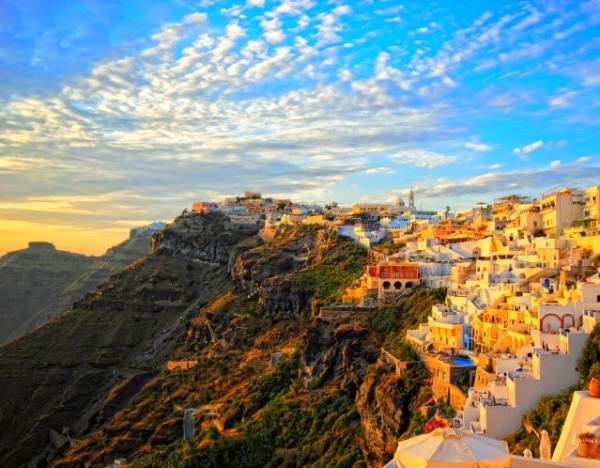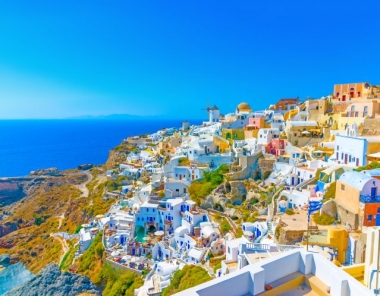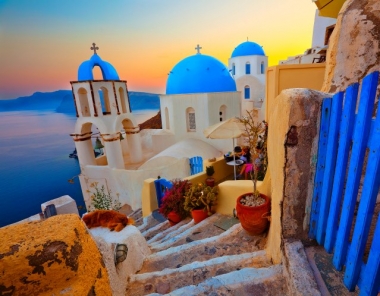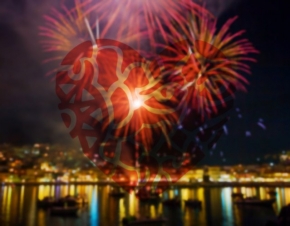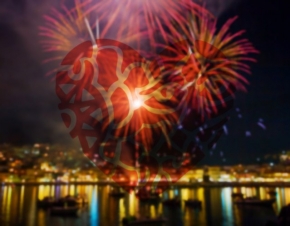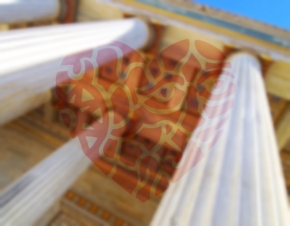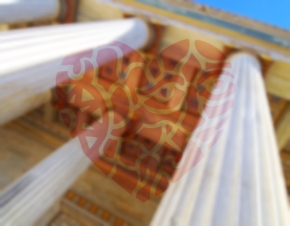Only 3 km from Fira and situated in the highest point of the caldera (300 m from the sea), there is the picturesque Imerovigli, hosting the best view of the volcano. Its name indicates that in the past here was probably a vigla (observatory) to identify the pirate ships.
Imerovigli has been declared a traditional community and therefore the authorities have imposed restrictive building codes. Of course this does not mean that it lacks luxury hotels, restaurants, shops and anything a visitor may wish for, making wandering the narrow streets even more beautiful.
In front of Imerovigli is the now abandoned Castel of Skaros. Built in 1207, it was the capital of Santorini until the 18th century, when it was abandoned after suffering terrible disasters due to the volcano. Today only a few ruins are preserved.
The settlement of Fira, built on the caldera, is the capital of Santorini island. It was founded in the late 18th century, when the Skaros castle in Imerovigli was abandoned.
Just below Fira lies Gialos, the old harbor of Santorini. If you want to go from the port to Fira, you have multiple options, ranging from a modern teleferic, to traditional donkeys or a nice walk.
Fira is the center of all activity in Santorini. Here you will literally find everything. Luxury hotels, inns, shops for all tastes, jewelers, galleries, restaurants, bars.. Whatever you wish for, you will find it in Fira.
Besides the unique view that accompanies you in each step you take, there are many worth seeing museums, among which is the Museum of Prehistoric Thira in Thira and the Archaeological Museum of Santorini.
The first weekend after September the 8th is the most famous in Spetses, since then the biggest celebration of the island takes place: Armata.
The Armata is a week full of cultural, religious and other events, which culminates during the weekend, with the representation of the burning of the Turkish fleet in 1822. Back then, while the Greek fleet besieged Nafplio, participating in the revolution against the Turks, a part of the Turkish fleet turned against the defenseless island of Spetses for distraction.
Their aim was to conquer the almost defenseless island and force the Greek ships to rush to Spetses, thereby abandoning the siege of Nafplio.
The only few people of Spetses, who had remained to defend the island, resisted heroically and, led by Kosmas Barbatsis, managed to set fire to the Turkish flagship. So, the rest of the Turks had no other choice, but to eventually abandon the island.
During Armata, when the night falls, this heroic effort is represented with the burning of an effigy of the Turkish flagship and plenty of with fireworks.
Back then, the people of Spetses attributed this unexpected victory also to the help of Holy Mary and thus built the church Panagia Armata to honor her.
As it is considered to be the most important event for Spetses, the whole island is actively involved in the events of Armata. There is a variety of celebrations, performances, exhibitions etc. that will satisfy even the most demanding visitor. Armata is a must-lived experience , just make sure you have made your reservations early because those days the island is heaving with people.
Spetses, like every other place in Greece, maintains its own traditions and customs and visitors have the chance to get to know them through various events.
The most characteristic event of Spetses is the world-known Armata that takes place each September.
Moreover, in Spetses with the initiative of the “Poseidonion Grand Hotel “ important athletic events are organized on a yearly basis, attracting visitors and participations from all over the world. Some of them are:
- Spetses Mini Marathon (October)
- Spetses Classic Yacht Race (June)
- Spetsathlon (Spring)
Easter in Spetses, as throughout Greece, is a once in a lifetime experience not to be missed. The procession of the Epitaph in the scenic alleys, the Resurrection of Christ with the following fireworks and of course the much-anticipated Eastern dinner, will undoubtedly remain deeply etched in the memory of every visitor.
Besides Easter, there are several other panigiria-festivals and celebrations of religious nature, such as:
- In the spring, Agiou Georgiou in Zogeria
- 1st of July, Agion Anargyron
- 17th of July, Agias Marina's
- 25th of July, Agias Anna's
- 26th of July, Agias Paraskevi's
- 27th of July, Agiou Padeleimona
- 15th of August, Kimisi Theotokou in Kasteli(Dormition of the mother of god)
- 1st of September, Panagias "tou Daskalaki"
- 6th of December, Agios Nikolaos day
For more information you can contact the Municipality of Spetses in the phone 22980 -20010, and the cultural association of Spetses tel 22980- 22980- 72370 and 74237
The Spetses Museum is housed in the mansion of Chatzigianni- Mexi, who was one of the first lords in Spetses during the era of Greek revolution.
Built in 1798 the house consists of ground floor and two floors.
The Spetses museum hosts findings covering the entire history of the island, from ancient times to modern times. Among others you will see:
- pottery of the Early and the Classical period,
- sculptures and coins from the Roman and Byzantine periods,
- Byzantine icons and other religious objects,
- traditional costumes,
Especially from the period of the Greek Revolution, what stands out, among others, is the flag of the Revolution, the rise of which marked the entrance of Spetses and their fleet in the battle, the bones of the heroine Laskarina Boumpoulina, weapons and portraits of Spetsan captains.
More information about the Spetses Museum on the phone 22980-72994.
The Bouboulina Museum was founded in 1991 in Spetses by Philip Demertzi-Boubouli(her great great great grandson), and is housed in the mansion where the heroine of the Greek Revolution Laskarina Bouboulina lived, near Dapia.
The mansion is worth a visit as building itself, being a typical example of architecture and ornamentation that the rich houses of the 17th century had at the time of tis construction.
Here guests have the opportunity to learn bits and pieces of the history of the Greek Revolution and the key role played by this captain, Laskarina Bouboulina. You will also admire historic relics from the years of revolution, as well as nautical items of the season, engravings, old books, ship models, etc.
Also, the museum organizes various cultural events.
More information about the Bouboulina Museum can be found in www.bouboulinamuseum-spetses.gr and phone at 22980- 22980 -72 416 and 72 077.


